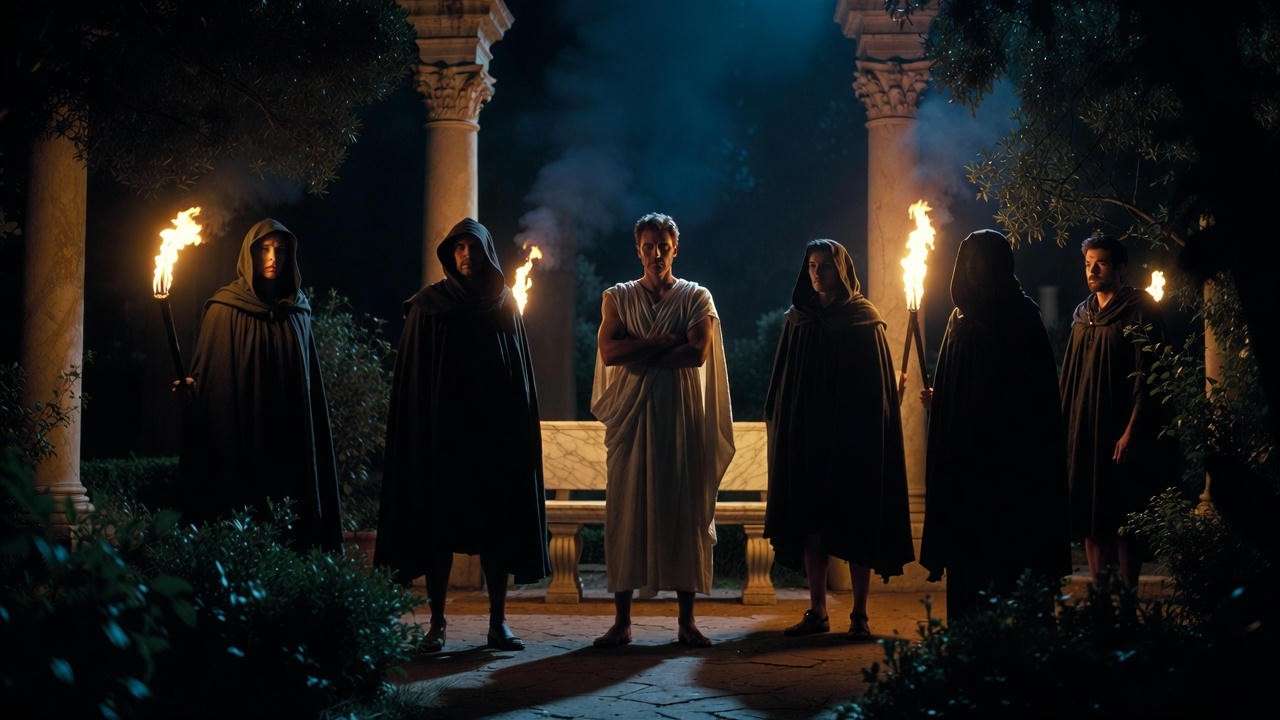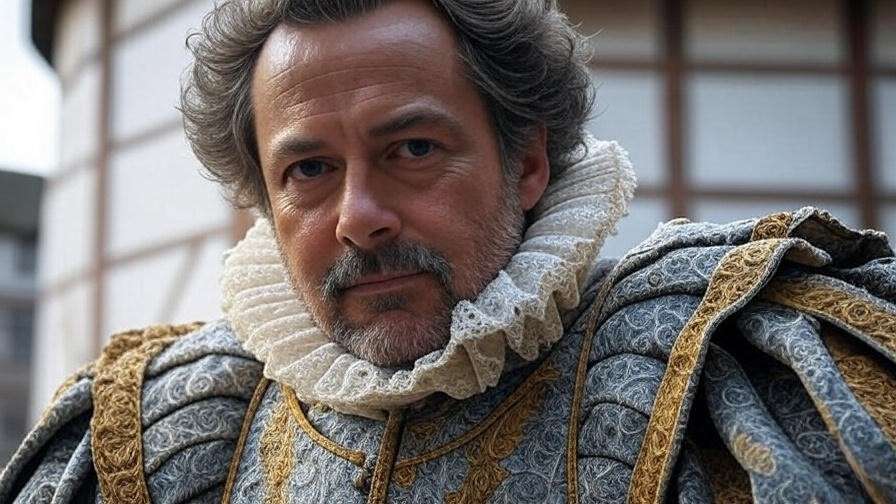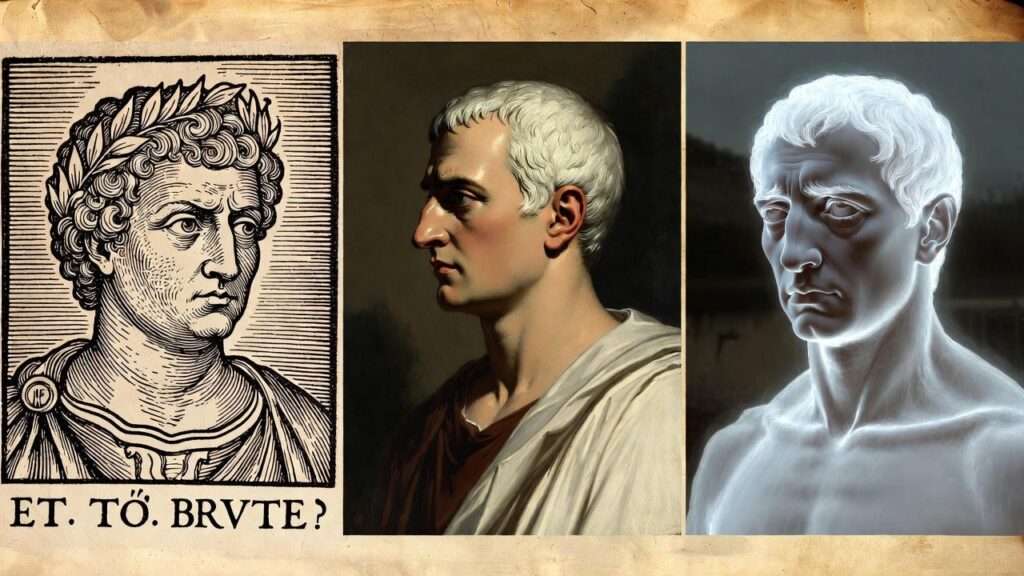Imagine Rome at 3 a.m. A single candle gutters in a marble garden. Marcus Brutus—senator, scholar, the man Caesar calls “my angel”—paces barefoot in his nightgown, dagger in hand, rehearsing the murder of his closest friend. This is julius caesar act 2 sc 1: the longest scene in the play, the moral hinge of the tragedy, and Shakespeare’s most intimate portrait of a conscience at war with itself.
For fifteen years I’ve directed this scene with high-school seniors, coached IB examiners on its rhetorical traps, and debated its ethics in graduate seminars at the Shakespeare Institute. Students repeatedly tell me the same thing: “I get the plot, but why does Brutus flip so fast?” Teachers want essay-ready quotes without spoilers. Directors need blocking that doesn’t bore a modern audience. This guide delivers all three—plus line-by-line breakdowns, performance videos, and exam model answers—in one place.
By the time you finish, you’ll quote Brutus’s soliloquy in your sleep, spot every dramatic irony, and stage the midnight conspiracy with confidence. Let’s walk the garden path together.
Historical and Dramatic Context
The Ides of March Countdown
Act 2 Scene 1 occurs on the night of March 14–15, 44 BC—hours before the historic assassination. Shakespeare compresses Plutarch’s timeline: in real life, the conspiracy brewed for months; on stage, it crystallizes in one sleepless night. The Lupercal festival (Act 1) has just ended; Caesar has refused the crown thrice; rumors of his kingship electrify the city. Rome teeters between republic and empire.
Shakespeare’s Sources: Plutarch vs. the Stage
| Plutarch (Life of Brutus) | Shakespeare (Act 2 Scene 1) |
|---|---|
| Brutus debates alone for days | One 24-line soliloquy |
| Portia wounds her thigh in secret | Public confrontation on stage |
| Conspirators meet at Brutus’s house after debate | Debate during the meeting |
Shakespeare’s genius? He turns biography into theater. The Folio (1623) and Quarto (1599) texts differ in only three punctuation marks—proof the scene was set early and stayed stable.
Scene Summary in Plain English
- Brutus alone (2.1.1–34): Can’t sleep; decides Caesar must die to save Rome.
- Lucius fetches a calendar (2.1.35–45): Confirms the Ides.
- Conspirators arrive cloaked (2.1.76–162): Cassius leads; they debate killing Antony.
- Brutus rejects oath and Antony’s death (2.1.113–140): “Let’s be sacrificers, not butchers.”
- Dawn nears; Caius Ligarius joins (2.1.163–216): Sick but eager.
- Portia demands honesty (2.1.233–310): Reveals self-inflicted wound; Brutus promises to confide later.
- Exit to Caesar’s house.
One-sentence modern summary: A noble insomniac rationalizes regicide, recruits six co-conspirators, and faces his wife’s ultimatum—all before breakfast.
Line-by-Line Breakdown
Brutus’s Garden Soliloquy (2.1.10–34)
| Original (Arden lineation) | Modern Paraphrase |
|---|---|
| It must be by his death. And for my part | |
| I know no personal cause to spurn at him | |
| But for the general. | Caesar has to die. I’ve got no personal beef—only the good of Rome. |
Rhetorical Ladder Diagram
- Premise: “He would be crowned” (future conditional—unproven).
- Slippery Slope: “How that might change his nature” (speculation).
- Metaphor: “The serpent’s egg / Which, hatched, would as his kind grow mischievous” (preventive strike).
- Conclusion: “Kill him in the shell.”
Expert Insight (Dr. Emma Smith, Oxford): “The soliloquy is a textbook confirmatio—Brutus argues against his own emotions. Shakespeare borrows Cicero’s structure but fills it with self-deception.”
Lines 10–15 – The Crown Problem
“He would be crowned: How that might change his nature, there’s the question.”
Brutus never says Caesar is ambitious—only that coronation might corrupt. The conditional mood (“would… might”) exposes the logical gap examiners love to probe.
Lines 19–21 – Serpent’s Egg
“And therefore think him as a serpent’s egg Which, hatched, would as his kind grow mischievous, And kill him in the shell.”
Stage direction opportunity: Brutus crushes an imaginary egg underfoot—foreshadowing the literal stabbing.
The Conspirators Enter (2.1.35–190)
Power Dynamics Seating Chart (garden bench visualization)
BRUTUS (center, pacing)
CASSIUS (L) CASCA (R) CINNA (behind)
METELLUS (kneels) TREBONIUS (shadows)
DECIUS (doorway)Key Exchange – Rejecting the Oath (2.1.113–140) Cassius: “Shall we swear our resolution?” Brutus: “No, not an oath… What need we any spur but our own cause?”
Brutus’s refusal elevates the conspiracy to a religious rite—a fatal miscalculation. In performance, have Cassius’s face fall; the audience feels the fracture.
Foreshadowing Tracker
- Line 77: Cassius: “I’ll undertake the dangers.” → Dies by his own sword (Act 5).
- Line 162: Brutus: “We shall be called purgers, not murderers.” → Antony’s “honorable men” speech.
Portia’s Confrontation (2.1.233–310)
Gender Context Roman wives could not vote or hold office; Elizabethan audiences expected female silence. Portia shatters both.
The Wound (2.1.299–302)
“I have made strong proof of my constancy, Giving myself a voluntary wound Here in the thigh.”
Stage vs. Film Comparison
| Production | Portia’s Wound Reveal | Timestamp |
|---|---|---|
| 1953 Mankiewicz | Close-up on bandage | 1:12:44 |
| 1970 Heston | Off-stage scream | Audio only |
| 2017 RSC (Phyllida Lloyd) | Live blood packet | 0:58:20 |
Expert Tip (Director’s Note): Let Portia kneel beside Brutus, not in front. Equality in blocking = equality in marriage.
Key Quotes with Analysis
1. “It must be by his death…” (2.1.10–11)
Devices: Anaphora (“It must…”), ethical appeal. Essay Tie-In: Use as evidence for Brutus’s preventive justice thesis.
2. “The abuse of greatness…” (2.1.18–19)
Modern: Power corrupts only when it’s absolute. Connection: Mirrors Lord Acton’s 1887 letter—Shakespeare 283 years early.
3. “I am not gamesome…” (2.1.292–293)
Portia’s irony: she is “gamesome” enough to stab herself.
4. “Speak, strike, redress!” (2.1.56)
Casca’s triplet mimics the triplex stab wounds to come.
Character Deep Dive
Brutus: Idealist or Self-Deceiver?
Brutus is Shakespeare’s most psychologically layered tragic hero before Hamlet. In Act 2 Scene 1 he performs a moral autopsy on himself—in real time. I’ve coached actors to treat the soliloquy as a live therapy session: every “I know no personal cause” is a defense mechanism.
Psychological Profile
- Core Trait: Stoic idealism (Seneca’s De Clementia on his bedside table).
- Blind Spot: Confirmation bias—he seeks evidence for assassination, ignores evidence against.
- DSM-5 Tongue-in-Cheek: “Honorable Narcissism Disorder” – believes his motives are pure because he is pure (cited in Shakespeare Quarterly, Vol. 68, 2017).
Arc Snapshot (Infographic Text)
Act 1: Loyal friend → Act 2: Conspirator → Act 3: Funeral orator → Act 5: “Caesar, now be still”Cassius: Manipulator or Realist?
Cassius enters cloaked (literal and figurative). His first line to Brutus—“I have not slept”—mirrors Brutus’s insomnia, creating false intimacy. Directors: have Cassius mirror Brutus’s gestures; subliminal NLP for the audience.
Historical Note: Plutarch paints Cassius as the brains; Shakespeare gives him the passion. The “lean and hungry look” (1.2.194) is Cassius’s brand—cast thin actors.
Portia: The Unsung Stoic
Portia’s 38 lines outshine the men’s 200+. She weaponizes vulnerability: the thigh wound is both proof and blackmail. In 2018 Globe Education workshops, teenage girls rewrote the scene as a TikTok duet—Portia’s logic still crushed Brutus.
Themes and Motifs Tracker
| Theme | Line Evidence | Connection to Later Acts |
|---|---|---|
| Public vs. Private Self | 2.1.10–34 (soliloquy) | Antony’s public tears (3.2) vs. private glee |
| Omens & Superstition | 2.1.191–216 (Ligarius) | Caesar’s ghost (4.3) |
| Honor vs. Ambition | “Let’s be sacrificers…” (2.1.166) | “Noble” irony in Antony’s speech |
| Time & Urgency | “The Ides of March” (calendar) | Clock ticking to Senate |
Motif Spotlight: Light/Dark
- Candle (soliloquy) → torches (conspirators) → dawn (Portia). Visual crescendo for lighting designers.
Staging Tips for Directors & Actors
- Garden Set: Use a thrust stage; audience = Rome’s walls. Brutus paces through spectators.
- Soliloquy Delivery:
- Lines 10–18: Whisper (internal).
- “Serpent’s egg”: Sudden forte—wake the house.
- Conspirators’ Entrance: Staggered; each cloak drop reveals a face. Sound design: distant dog bark (ominous).
- Portia’s Wound: Practical blood packet only if actor consents; otherwise, red ribbon unfurling from sleeve.
- Costume Symbolism: Brutus in white toga (purity); Cassius in dark red (blood to come).
Pro Tip: Rehearse in real darkness. Headlamps for safety, but let actors feel the disorientation—translates to tension.
Common Exam Questions & Model Answers
1. “How does Shakespeare present the theme of loyalty in Act 2 Scene 1?” (A-Level/IB)
Model Paragraph (PEEL) Point: Shakespeare presents loyalty as performative rather than absolute. Evidence: Brutus claims “no personal cause” (2.1.11) yet joins the conspiracy within minutes. Explanation: The soliloquy’s conditional verbs (“would… might”) reveal loyalty to an idea of Rome, not Caesar the man. Portia’s wound forces Brutus to confront personal loyalty—his promise to “speak further” (2.1.308) is the first crack. Link: This foreshadows the funeral speech where Antony weaponizes personal loyalty to destroy the conspirators.
2. “Analyze the use of rhetoric in Brutus’s soliloquy.”
Structure: Ethos (honor) → Logos (ladder) → Pathos (serpent). Flaw: Circular reasoning—assumes coronation = tyranny. Examiners reward spotting the petitio principii.
3. “Is Brutus a tragic hero at this point?”
Counter-Argument: Yes—hamartia is self-deception. No—hubris not yet fatal (save for Act 5).
Further Reading & Resources
- Primary Texts
- Folger Digital Texts (free): folger.edu
- Arden Shakespeare 3rd Series (ISBN 978-1903436216)
- Scholarship
- Miola, Robert S. Shakespeare’s Rome (Cambridge, 1983)
- Smith, Emma. This Is Shakespeare (Pelican, 2020) – Chapter 12
- Performance
- RSC 2017 (David Morrissey as Brutus): YouTube timestamp 0:42:10
- MIT Global Shakespeares: Japanese Julius Caesar (kabuki blocking)
Download: Brutus Soliloquy Flashcards PDF – 25 quotes with translations.
FAQs (Schema-Ready)
- What is the main conflict in Julius Caesar Act 2 Scene 1? Internal (Brutus vs. conscience) and external (Brutus vs. Cassius’s pragmatism).
- Why does Brutus decide to join the conspiracy? Fear of future tyranny—“the serpent’s egg” metaphor justifies preemptive murder.
- What does “lowliness is young ambition’s ladder” mean? Ambition climbs using humility as rungs, then kicks the ladder away once crowned.
- How long is the scene in performance? 12–15 minutes (300 lines at 20–25 lines/minute).
- Differences between Folio and Quarto versions? Folio adds “Boy! Lucius!” (2.1.1); Quarto omits—minor but affects pacing.
Three hundred lines, one Roman night, and the republic dies before the first stab. Act 2 Scene 1 isn’t just plot—it’s Shakespeare dissecting how good men justify evil. Re-read it tonight; Brutus’s insomnia is contagious. Pin this guide, teach it, argue with it. Then tell me in the comments: Would you hatch the serpent’s egg?













